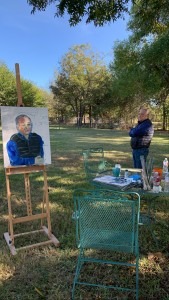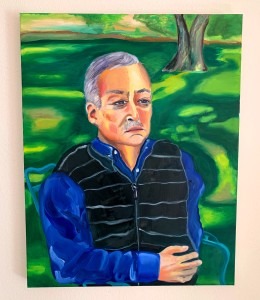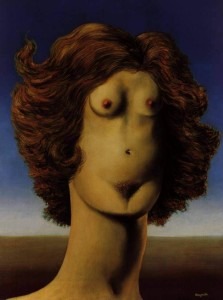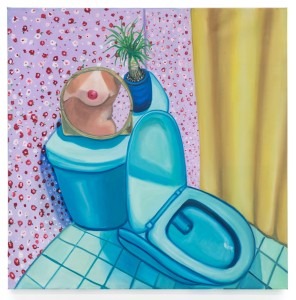The human figure is the heart of my work. Using heavily saturated oil paint, I combine color blocking and loose, dynamic lines to create a wonky figure that looks neither completely realistic nor cartoon in order to create a nonbinary space of surrealism and realism. I blend aggressive, large paint marks with small, detailed marks and lines to create a variety of movement and light. When I paint the figure, I prefer painting from life rather than painting from photographs. Painting from life shows my immediate personal perspective and the temporality of the experience of inhabiting the same space as the sitter. Similar to Alice Neel’s process, I paint from life to better depict the sitter’s personhood. I work with my perception of light and color relating to my subjects and paint in a style that is not quite caricatured, but also not photorealism. Observational paintings create an illusion that makes the figure feel more human and more dimensional.
. 

After the pandemic, I was forced to go from portraiture of others, to looking inward. I used magazines, my reflection in the mirror, covered myself with blankets, and found figuration within nature and fabrics. I heavily studied the photography genre, “Invisible Mothers” and found my own way of covering women.
As a woman myself, I am interested in depicting the female form and manipulating body parts within the image. I use bright, saturated oil paints in order to render the female form in imaginary spaces. I integrate gestures from magazines to create thematic compositions that are sometimes sexual and strange.
I use the covering to suggest the female form and to abstract further the figure into a ghostly shape. Using patterns and fabric, the form is abstracted with exposed body parts such as the hands, feet, and breasts. I expose these body parts to show the assumed gesture of the form, as well as the assumed gender. I paint the exposed breasts in a smooth and unnatural manner that makes them seem surreal and unfamiliar. One of my inspirations, Rene Magritte also covered figures, typically female, to distort the form. Finding similarities in Magritte’s work, I expose the breasts in my paintings while displacing the body parts of a woman, taking away her individuality and reducing her to just her body parts.

The women in my paintings are simultaneously covered and exposed. The cropping and personifying of the breasts shield their individuality and subjectivity from the violence of the dehumanizing and objectifying phallic gaze. This visual convention in other contexts dehumanizes the women as collections of headless and sightless disembodied parts, much like the cropping of women’s body parts used in fashion photography, advertisements, and media. By turning women’s body parts into freestanding objects, their bodies and sexualities are turned into sexual fetishes that are commodifiable.






